How To Raise Low Blood Pressure Quickly with Food and Drinks
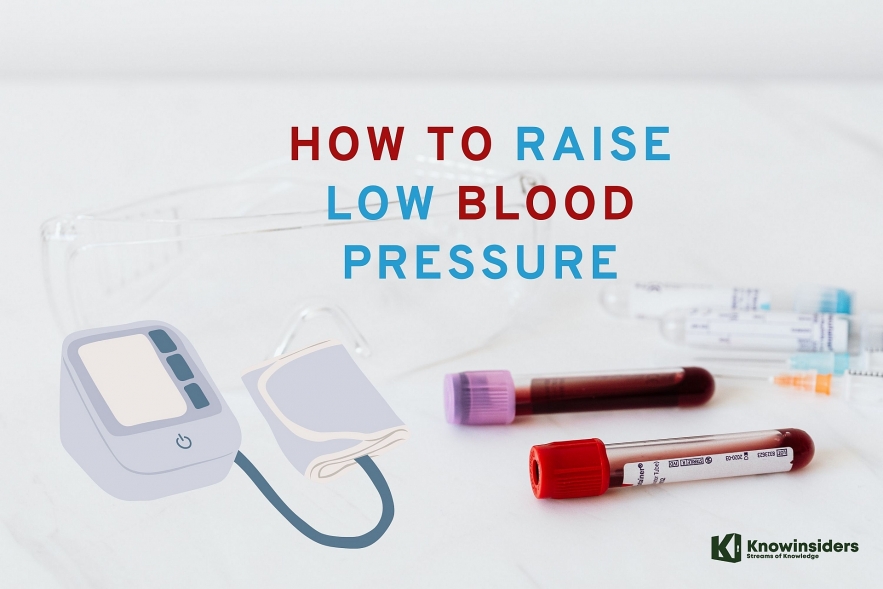 |
| How To Raise Low Blood Pressure. Photo KnowInsiders |
Blood pressure levels change during the day. Your body constantly works on balancing your blood pressure. Blood pressure helps your vital organs, including your brain and lungs, get enough blood and oxygen to function better. If you wonder how to raise low blood pressure naturally, in this article you will find 5 natural ways.
Having low blood pressure once in a while isn’t like to cause concern. But having it regularly can be because of diabetes, anemia, hypothyroidism, pregnancy or mildly happen when you stand up and after you eat.
What Is Low Blood Pressure?
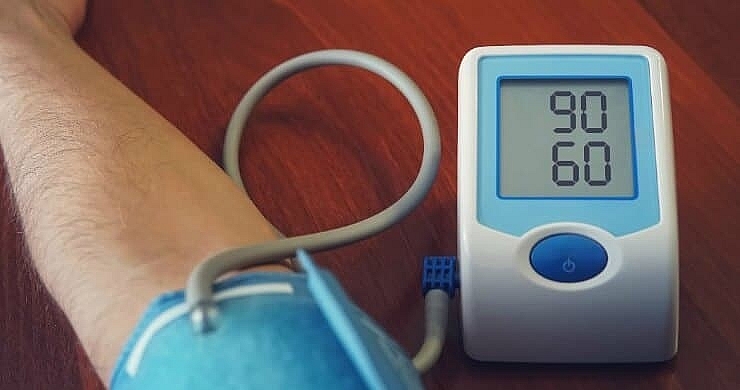 |
| Photo neededhealth |
Hypotension is the medical term for low blood pressure (less than 90/60).
A blood pressure reading appears as two numbers. The first and higher of the two is a measure of systolic pressure, or the pressure in the arteries when the heart beats and fills them with blood. The second number measures diastolic pressure, or the pressure in the arteries when the heart rests between beats.
Optimal blood pressure is less than 120/80 (systolic/diastolic). In healthy people, low blood pressure without any symptoms is not usually a concern and does not need to be treated. But low blood pressure can be a sign of an underlying problem -- especially in the elderly -- where it may cause inadequate blood flow to the heart, brain, and other vital organs.
The basics on low blood pressure from WebMD.Chronic low blood pressure with no symptoms is almost never serious. But health problems can occur when blood pressure drops suddenly and the brain is deprived of an adequate blood supply. This can lead to dizziness or lightheadedness. Sudden drops in blood pressure most commonly occur in someone who's rising from a lying down or sitting position to standing. This kind of low blood pressure is known as postural hypotension or orthostatic hypotension. Another type of low blood pressure can occur when someone stands for a long period of time. This is called neurally mediated hypotension.
What Causes Low Blood Pressure?
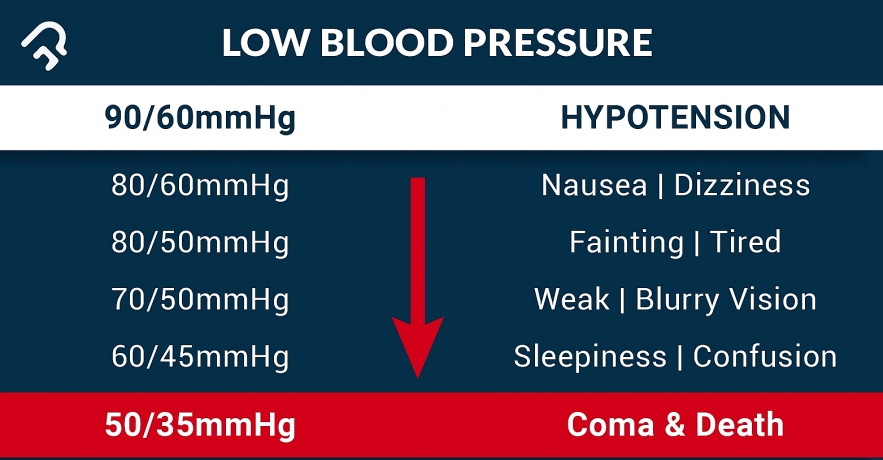 |
| Photo Pharmeasy |
The cause of low blood pressure isn't always clear. It may be associated with the following:
Hormonal problems such as an underactive thyroid (hypothyroidism), diabetes, or low blood sugar (hypoglycemia)
Some over-the-counter medications
Some prescription medicines such as for high blood pressure, depression or Parkinson’s disease
Heart failure
Heart arrhythmias (abnormal heart rhythms)
Widening, or dilation, of the blood vessels
Heat exhaustion or heat stroke
Liver disease
What Causes a Sudden Drop in Blood Pressure?
 |
| Photo heart |
Sudden drops in blood pressure can be life-threatening. Causes of this type of hypotension include:
Loss of blood from bleeding
Low body temperature
High body temperature
Heart muscle disease causing heart failure
Sepsis, a severe blood infection
Severe dehydration from vomiting, diarrhea, or fever
A reaction to medication or alcohol
A severe allergic reaction called anaphylaxis that causes an irregular heartbeat
| Symptoms of low blood pressure The symptoms of low blood pressure can include: blurred vision confusion depression dizziness fainting fatigue feeling cold feeling thirsty an inability to concentrate nausea rapid, shallow breathing sweating |
What To Do To Raise Low Blood Pressure Quickly
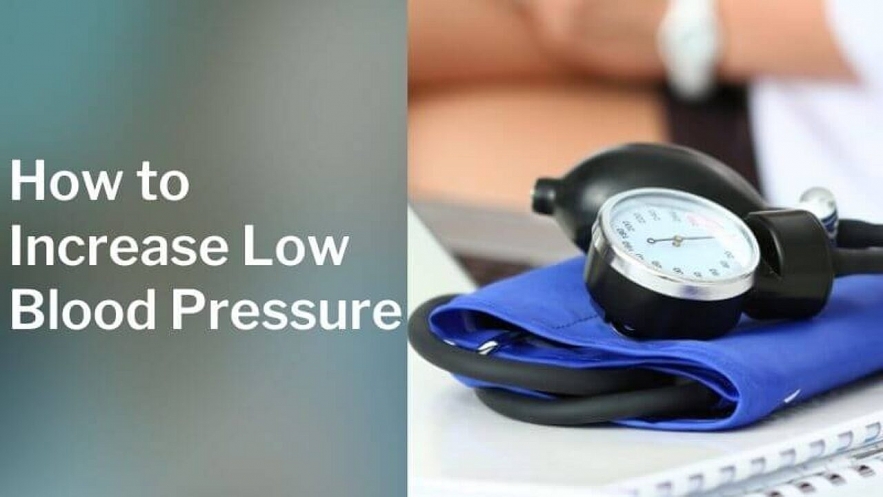 |
| Photo who care health |
Eat small portions frequently
Sneak healthy snacking sessions in-between the major meals of the day to avoid long gaps. Eating small portions several times of the day helps in preventing the sudden drop in blood pressure that one may experience after meals.
So, if you are eating three full meals a day, it would be better to rather have them distributed in to five small meals a day. This one's a great home remedy for also people who have diabetes.
Stay Hydrated / Prevent Dehydration
 |
| Photo healthline |
For a normal, healthy blood pressure level, the best beverage to drink is water. Water supports blood vessels and arteries, as well as blood flow to prevent low blood pressure.
Drinking water has another major benefit: preventing dehydration. Dehydration can lead to low blood pressure (hypotension). Alcohol consumption, heat and not drinking enough water can cause dehydration.
Exercise
If you have symptoms of low blood pressure, be sure to take precautions so that you can exercise safely and effectively. Because sudden changes in posture can cause orthostatic hypotension, it is best to avoid any movement that involves head level or below the heart. This includes exercises such as bench press, sit-ups, bend rowing, reverse flight, and yoga, as well as postures that make you lie down.
 |
| Photo yoga |
The best solution is to find alternatives to these exercises and slowly change the posture during any head-up part of the exercise. It is also critical to arrange exercises together to minimize getting up (i.e. sitting, getting up, and standing), as this can also lead to orthostatic hypotension (blood pressure suddenly drops). Therefore, exercise is one of the answers to how to increase low blood pressure quickly.
After activities such as running and swimming, muscles need more oxygen. That’s why your heart rate increase. You breathe more quickly than usual and your heart starts to pump faster to circulate blood and provide oxygen to your body. This immediate rise in blood pressure boosts your energy levels and usually returns to normal within several hours of exercise. It is important to get a doctor’s and a professional coach’s recommendations before making a daily or weekly exercise plan.
Drink Plenty of Fluids
When you’re dehydrated, your blood volume is reduced, which causes your blood pressure to decrease. Most doctors recommend drinking at least two liters (roughly eight glasses) of water every day. Your water intake should be higher in hot weather or while exercising.
Have adequate salt:Excess salt is bad, but on the other hand it is required by your body in moderate quantities. According to the World Health Organisation, your daily diet must contain at one teaspoon of added salt besides what you derive from natural from fruits and vegetables. In summers or if you exercise daily, keep some lime water with a pinch of salt handy. Salt works like an instant pick-me-up. Make sure you do not have too much salt too that may lead to problems like water retention along with high blood pressure.
Drink Caffeine
 |
| Photo Eat Peru |
Coffee Helps Raise Low Blood Pressure
Beverages like coffee and caffeinated tea cause an increase in heart rate and a temporary spike in blood pressure. This effect is usually short-term, and caffeine intake does not affect everybody’s blood pressure the same way. If you’re a regular coffee drinker, you may also develop a higher tolerance for its effects on the vascular system.
Boost Your B12 Intake
Vitamin B12 performs a critical role in helping the body produce healthy red blood cells. Lack of this important vitamin can result in anemia, which lowers blood pressure and can result in excessive bleeding as well as organ and nerve damage. Foods that are rich in vitamin B12 include eggs, chicken, fish like salmon and tuna, and low-fat dairy products.
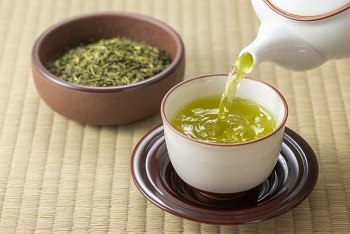 Effective Home Treatment to Improve Low Blood Pressure Effective Home Treatment to Improve Low Blood Pressure Low blood pressure can put your life at risk. There are effective treatments for low blood pressure you can apply. |
Fill Up On Folate
Folate (also known as Vitamin B9) is another essential vitamin found in foods such as asparagus, broccoli, liver, and legumes such as lentils and chickpeas. A folate deficiency can have many of the same symptoms as a Vitamin B12 deficiency, causing anemia which leads to lowered blood pressure.
Cut Back On Carbs
Foods that are high in carbohydrates, particularly processed carbs, tend to digest very quickly relative to other foods. This can lead to sudden drops in blood pressure. A low-carb diet has been shown in some studies to help with off-setting hypotension, especially in older adults.
Eat small portions frequently:Sneak healthy snacking sessions in-between the major meals of the day to avoid long gaps. Eating small portions several times of the day helps in preventing the sudden drop in blood pressure that one may experience after meals. So, if you are eating three full meals a day, it would be better to rather have them distributed in to five small meals a day. This one's a great home remedy for also people who have diabetes.
Easy On The Alcohol
Among its many negative health effects, drinking alcohol dehydrates you, which lowers your blood pressure by reducing your blood volume. Imbibe responsibly when you do drink. Try to have a glass of water after each alcoholic beverage in order to avoid dehydration.
Maintaining normal blood pressure is so important to the health of your heart and arteries, and it’s important to stay on top of your levels so you can make appropriate changes before health problems occur. If you have normal blood pressure, you should still try to get it checked at least once every year or two. If you are experiencing any of the symptoms of low blood pressure, please contact one of our expert cardiologists and we can help you craft a plan to avoid future issues.
Try this food and drinks
Almond Milk:Soak 5 to 6 almonds overnight, peel them in the morning, make a paste and boil them into a drink. Drink this every day to prevent your blood pressure from falling. There is no cholesterol or saturated fat in almond milk. In fact, it is rich in healthy fats like Omega-3 fatty acids. Include this milk in your low blood pressure diet; basically, you can add it to your cereals, smoothies, et al and enjoy the goodness of the almond milk.
Tulsi Leaves: “A home remedy from our granny’s treasure trove. Chew five to six tulsi leaves every morning,” suggests Dr. Rupali. Tulsi leaves have high levels of potassium, magnesium and vitamin c which can help in regulating your blood pressure. It is also loaded with an antioxidant called Eugenol which keeps the blood pressure under control and lowers cholesterol levels.
Munakka:Another remedy from granny’s kitchen. You can soak some munakka overnight and then boil it with milk and have it in the morning. Or you can just add a fistful of soaked munakkas in your breakfast regimen. It increases vitality and blood and helps in better circulation, which further helps you lower blood pressure. This Indian raisin is exactly what you need to ensure a healthy blood pressure.
What should be avoided
Avoid sitting up or standing up quickly: Instead, do it slowly. You can also try moving your legs a bit before trying to sit or stand up to get the blood flowing.
Avoid standing for long periods of time if possible: This is particularly important if you have neurally mediated hypotension.
Avoid crossing your legs while sitting: In some cases, this can prevent blood from flowing up and away from your legs.
Wear compression stockings: The stockings will apply pressure to your legs, helping blood move better. You should consult your doctor before you start to wear compression stockings as a form of treatment.
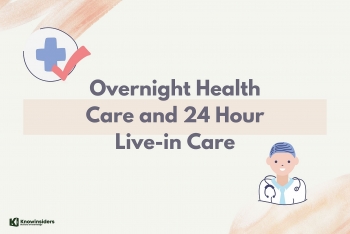 What is the Difference Between Overnight HealthCare and 24 Hour Live-in Care? What is the Difference Between Overnight HealthCare and 24 Hour Live-in Care? Are you considering around-the-clock home care for yourself or a loved one? Check out this article to know more about overnight health care and 24-hour ... |
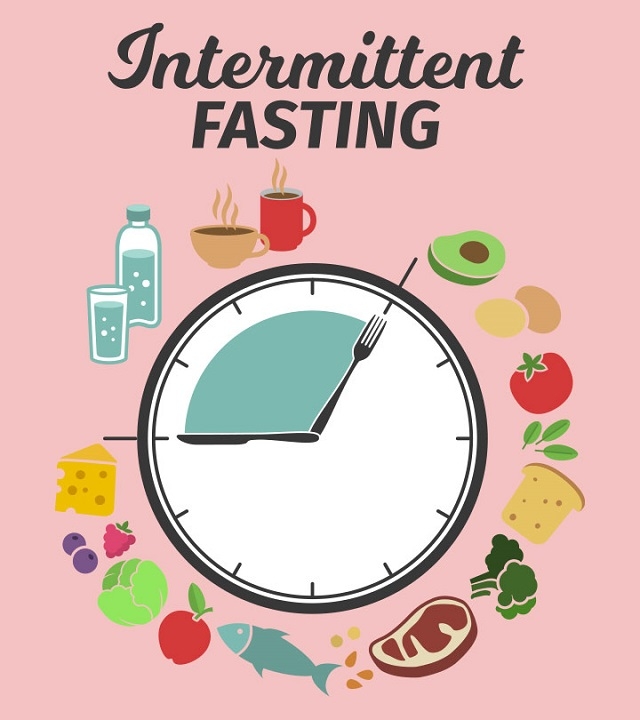 Is Intermittent Fasting Best Way to Lose Weight? New Study Reveals The Truth Is Intermittent Fasting Best Way to Lose Weight? New Study Reveals The Truth Intermittent fasting has grown in popularity as a quick way to shed pounds, but a new study finds this dieting approach may not be as ... |
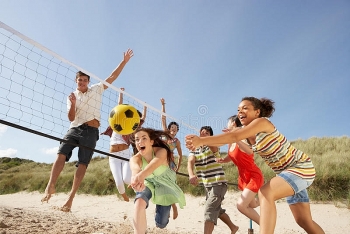 How to Stay Healthy During Your Vacation? How to Stay Healthy During Your Vacation? A vacation can turn into a burden thinking about the hurdles one must jump over in order to stay healthy. The good news is that ... |
























